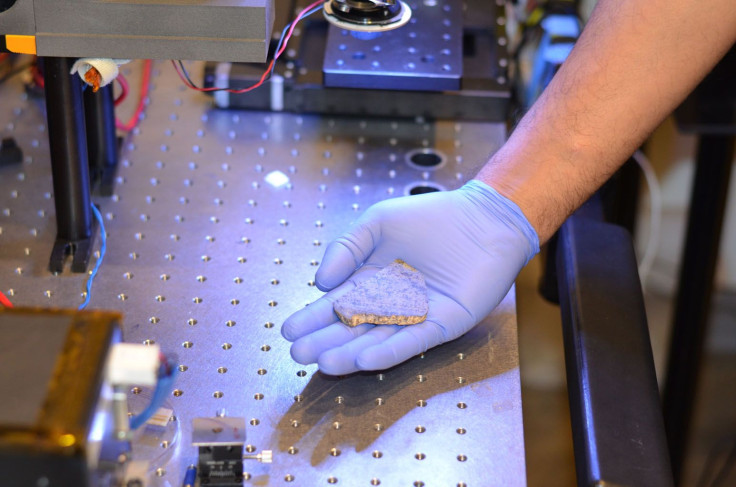NASA Mars 2020 Mission: Martian Meteorite Will Be On Board

NASA chooses wisely when packing up a payload to send to space and beyond. But for the next mission to Mars there will be something a little extra packed into the rover, a chunk of meteorite. The mission is set to launch in 2020.
The meteorite, called Sayh al Uhaymir 008 or SaU008, was found in 1999 in Oman and was later determined to have come from Mars. NASA isn’t just sending the meteorite back to the planet so it can return home, it’s going to serve an actual purpose.
One of the main tasks the rover’s mission will require that it collect samples of rock to potentially send back to Earth. The laser on the rover will be used to show rock features and help determine which samples to take will need to be calibrated once it arrives on Mars, said NASA. The SaU008 meteorite will be used to do this calibration and to get the settings on the laser just right. Essentially the meteorite will serve as the target for target practice.
NASA needed the perfect meteorite for the job though. It took some time for researchers involved in the Mars 2020 mission to find SaU008. The meteorite needed to be from Mars, which very few on Earth actually are. There are actually only 200 or so meteorites on Earth that came from Mars, according to NASA. Of those 200, the researchers needed one that was sturdy and wouldn’t break while traveling to Mars.
In addition to being incredibly sturdy, the meteorite had to have specific chemical features so that it could calibrate. After some research, it was decided SaU008 was the right meteorite to use and a piece of it that was housed in the Natural History Museum in London was procured for the mission.
This will be the first meteorite to ever have a piece of it returned back to the surface of Mars. It likely made its way to Earth after something created a strong impact with Mars and the rocks were cast off and traveled through space before arriving at Earth, according to NASA. Scientists are able to determine that the rocks are from Mars by studying the gas chemistry and mineralogy.
© Copyright IBTimes 2024. All rights reserved.





















